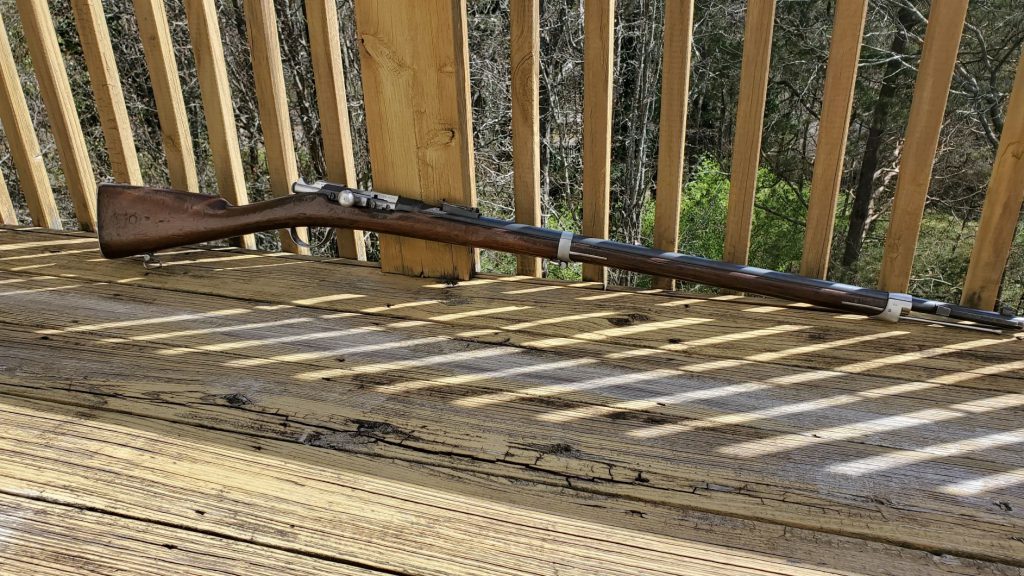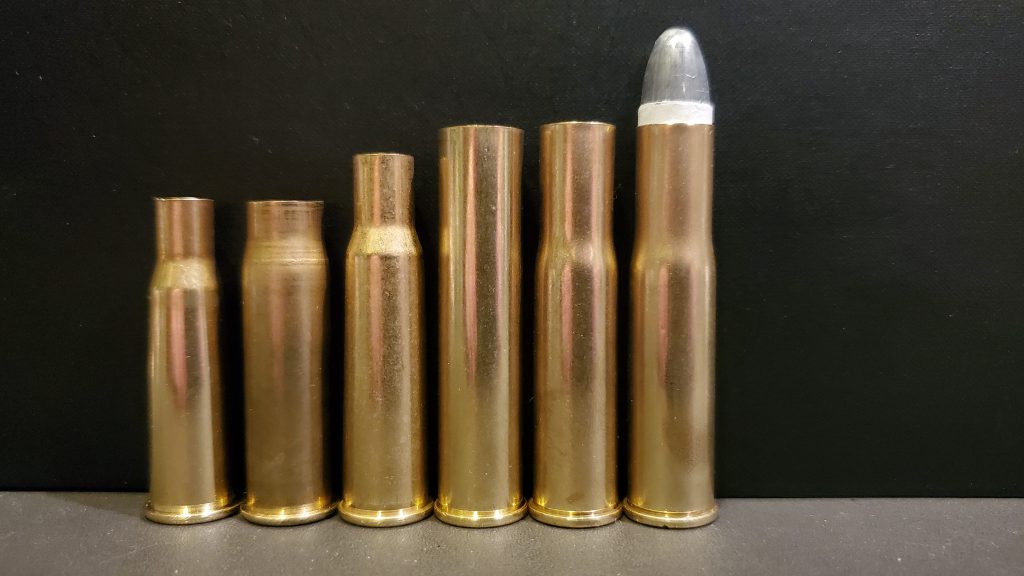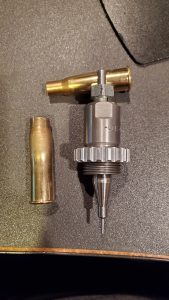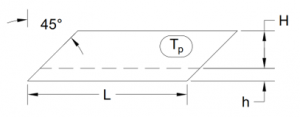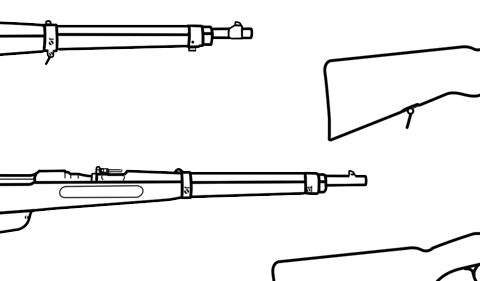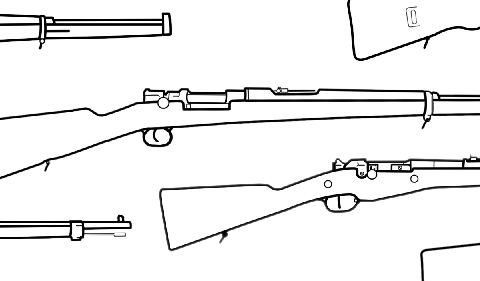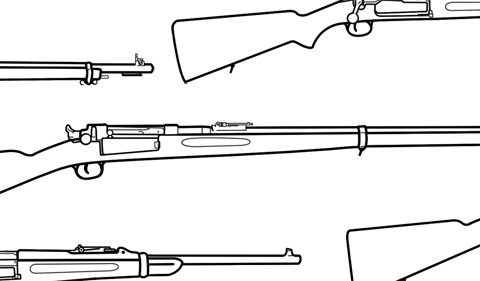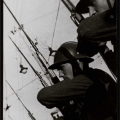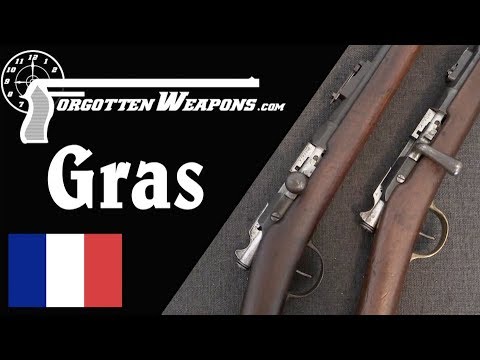Reloading the 11x59mmR Gras Cartridge
There are at least three parent cases that can be used for case conversions to 11x59mmR Gras: 8x50mmR Lebel, .348 Winchester, and .50-110 Winchester all three of which are shown in Figure 1.
- 8x50mmR – A natural choice seeming as 8x50mmR Lebel can claim 11x59mmR Gras as its parent case. However, 8x50mmR will need to be necked up to produce 11x59mmR and the resultant case length will be too short. When either expanded or fire-formed, the resultant case will be about 49.9mm (1.965”) long. Therefore, the case will be about 10mm (0.394”) too short in the neck. It will still hold a bullet, but not as well.
- .348 Winchester – Very similar to 8x50mmR, the .348 Winchester case is just a bit longer at 57mm (2.247”), but the rim is smaller at 15.4mm (0.605”) as opposed to 15.9mm (0.627”). Like 8x50mmR Lebel, .348 Winchester will also need to be necked up, but it will form a case that is closer to the correct case length. However, .348 Winchester tends be fairly more expensive.
- .50-110 Winchester – In my opinion, this is the best option for case conversions for 11x59mmR Gras. At 61mm (2.403”) long, the resultant case will be about 61.7mm (2.428”) once necked down. It can be trimmed down to 59mm (2.323”), or just left long if your chamber can accommodate the extra case length. Necking down is also a lot easier than taper-expanding or fire-forming. However, in addition to the relatively high cost of the cases, the rim is only 15.2mm (0.600”) and will result in relatively weak extraction. This guide will focus on using .50-110 Winchester to form 11x59mmR Gras.
Figure 1: (from L to R) 8x50mmR Lebel, fire-formed 8x50mmR Lebel, .348 Win., .50-110, formed .50-110, and loaded 11x59mmR Gras
There are a couple of options for dies. One is to modify .43 Mauser dies to size the neck and form the shoulder. Because the body on a .43 Mauser case is more narrow than 11x59mmR Gras, the dies will need to be cut down to just above the shoulder or counter-bored with a lathe. An example of a cut down sizing die that could be used for neck sizing is shown in Figure 2. The other is to buy dies from CH4D (these run about $150 as of Q1 2020). For those wishing to save money, a combination can be used. I used CH4D full length sizing dies to form the neck and shoulder, a CH4D expander die, and a cut down .43 Mauser seating die to seat and crimp.
Figure 2: An example of a cut down .43 Mauser full-length sizing die
When forming brass, annealing makes things significantly easier. Lube here is critical. Because of the large rim, shell holders are exceedingly easy to break if a case gets stuck. Once the cases are sized, reloading is like any other caliber.
I used 60gr. Of FFg Swiss black powder over a 370gr. RN bullet from Buffalo Arms designed specifically for paper patching.
WHEN USING BLACK POWDER, IT IS CRITICAL TO COMPRESS THE LOAD. Fiber wads, cloth patches, or cornmeal make excellent wadding materials.
If wishing to paper patch, the following sizing equation can be used to size the right bullet based on the groove diameter of the rifle found by slugging the bore:
DG -4*Tp+0.002”+0.001”
Where: DG=Groove Diameter
Tp =the thickness of the paper being used,
the 0.002” term accounts for paper shrinkage, and
the 0.001” term accounts for bullet over-sizing
For making a template for paper patches, the following equation can be used in conjunction will Figure 3:
L=2π*(D+Tp)
h=D/2
Where: D=the un-patched bullet diameter and
h=the overhang that will be folded under the base of the bullet
H=a length slightly under the length of the bullet’s bearing surface
For patching, wet the paper, place the bullet’s base on the dotted line, rolling tightly, folding the paper under the bullet, then drying.
Figure 3: Paper patch template
In my rifle, this particular load hits about 50mm (2.0″) at 45m (50yd). Enjoy shooting your rifles!
